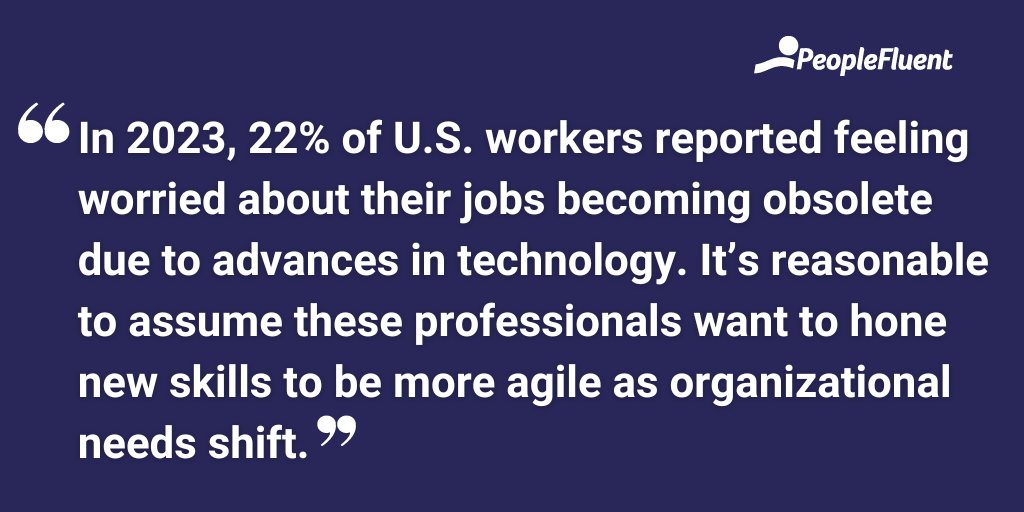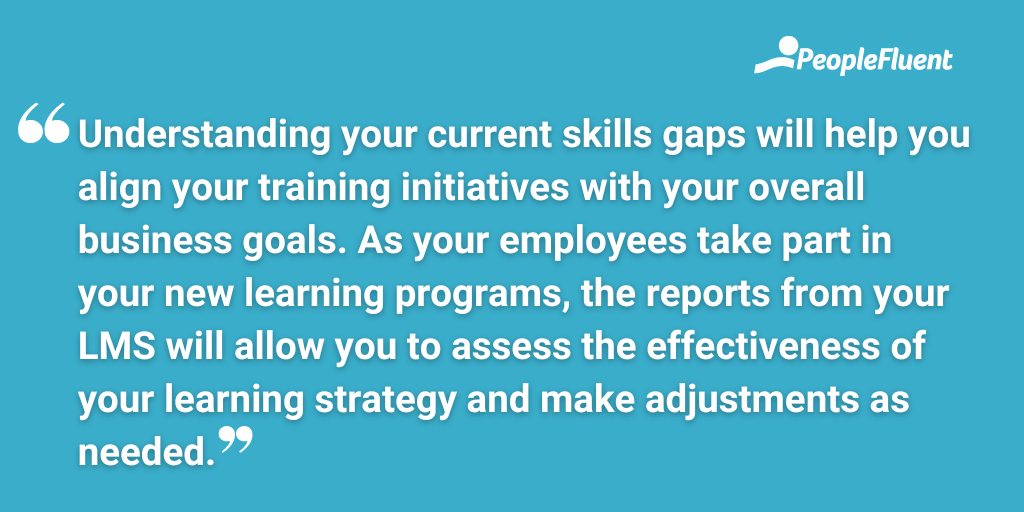Published: Feb 20, 2024Time to read: 5mins Category: Learning
The Role of Your LMS in Reskilling and Upskilling Employees
The job skills needed for businesses to thrive are constantly changing, especially as rapid advances in technology change expectations about the knowledge required to remain competitive. In this blog post, discover how your learning management system (LMS) plays an essential role in making sure your employees are prepared for the future.
No matter what industry you’re in, nearly everyone in your workforce will eventually need to upskill or reskill to continue to do their jobs successfully. Advances in technology and workplace innovations naturally lead to job roles evolving over time. For most organizations, the rapid adoption of artificial intelligence (AI) and related technologies means that “eventually” will be here sooner rather than later. All things considered, the World Economic Forum estimates that six in ten workers will need skills training by 2027.
Organizations can (and should) leverage their corporate learning platforms to ensure their employees are prepared to take on future workplace challenges. A highly configurable LMS will have functionalities that go far beyond standard compliance training. Taking advantage of features like custom learning paths, job-related competency management, data analytics, and seamless system integration capabilities will assist your employees with upskilling and reskilling for the future while giving you valuable insights into the effectiveness of your training initiatives. Used effectively, your LMS is an essential tool for growing a culture of continuous learning and securing your organizational success.

Upskill and Reskill Employees With Personalized Learning
Your employees’ motives for upskilling and reskilling are as unique as their personalities. Some will want to develop new skills in response to rapidly emerging technology tools. They may want to be prepared to take on different roles in the event their current roles are phased out. In 2023, 22% of U.S. workers reported feeling worried about their jobs becoming obsolete due to advances in technology. It’s reasonable to assume these professionals want to hone new skills to be more agile as organizational needs shift.
Other employees may want to strengthen their skills to advance in their current field, or they might aspire to future leadership roles. In either case, they’ll need to continue their professional development to ensure this career progression. You can use features in your LMS to support these employees and encourage them to achieve their professional learning goals.
Your LMS can house a diverse content library with flexible course options aligned with your employees’ preferred training courses (and your organization’s learning needs). Personalized learning paths make it easy for employees to understand which skills they need to develop in order to transition into new roles or grow in their current ones. You can also assign specific training content focused on closing skills gaps and improving performance.
These courses can be designed as independent, bite-sized microlearning modules or collaborative learning experiences. Course elements like asynchronous discussion boards and virtual meetings encourage knowledge sharing between employees and promote a continuous learning culture at your organization. Offering a combination of learning experiences through your LMS gives your workforce autonomy over their professional development while providing you essential insights into your organization’s skills landscape.

READ MORE ABOUT WORKFORCE DEVELOPMENT | ‘The Four Es: Your Fast Lane to Continuous Learning’
Identify Skills Gaps and Get Data-Driven Insights
A whopping 89% of learning and development (L&D) professionals agree that building employee skills will help organizations navigate the evolving professional landscape. Your LMS is a powerful tool for tracking your employees’ training progress and identifying any skills gaps within your organization. Before implementing a new training program, you can use quizzes in your LMS to gather and assess data on your employees’ current skills. You can choose to assess broad skills across your entire workforce or focus on specific job functions.
Your initial skills assessment data should drive the decisions that shape your new training strategy. Understanding your current skills gaps will help you align your training initiatives with your overall business goals. As your employees take part in your new learning programs, the reports from your LMS will allow you to assess the effectiveness of your learning strategy and make adjustments as needed.
In addition to robust reporting, a highly configurable LMS should have integration capabilities with other systems that you can leverage to improve your upskilling and reskilling initiatives. For example, integrating your LMS with your talent management system allows your teams to run deeper analytics that connect your employees’ learning to their performance metrics. You can use that detailed information to more precisely target your organization’s essential learning needs and identify areas for improvement.
Choose the Right LMS for Your Workforce
Your learning goals, current skills gaps, and the overall complexity of your organization must all be considered when choosing an LMS. If you’re an enterprise company with highly complex needs, then you’ll need a highly configurable learning platform capable of accommodating your unique business requirements. Carefully consider your business goals and how you might leverage an LMS to achieve those goals, as well as how that LMS will integrate with your other software systems. Once you have the right LMS, you’ll be able to make strategic learning decisions aligned with your organization’s goals while empowering your employees to take ownership of their professional development.
KEEP READING ABOUT WORKFORCE SKILLS | ‘How Performance Software Can Transform Your Employee Skills and Competency Management’
Manage Your Complex Learning Needs
Find the right LMS and prepare your employees to upskill and reskill for the future. Download our ebook, ‘How Enterprise Companies in Highly Regulated Industries Choose the Right LMS,’ or request a PeopleFluent Learning demo today.